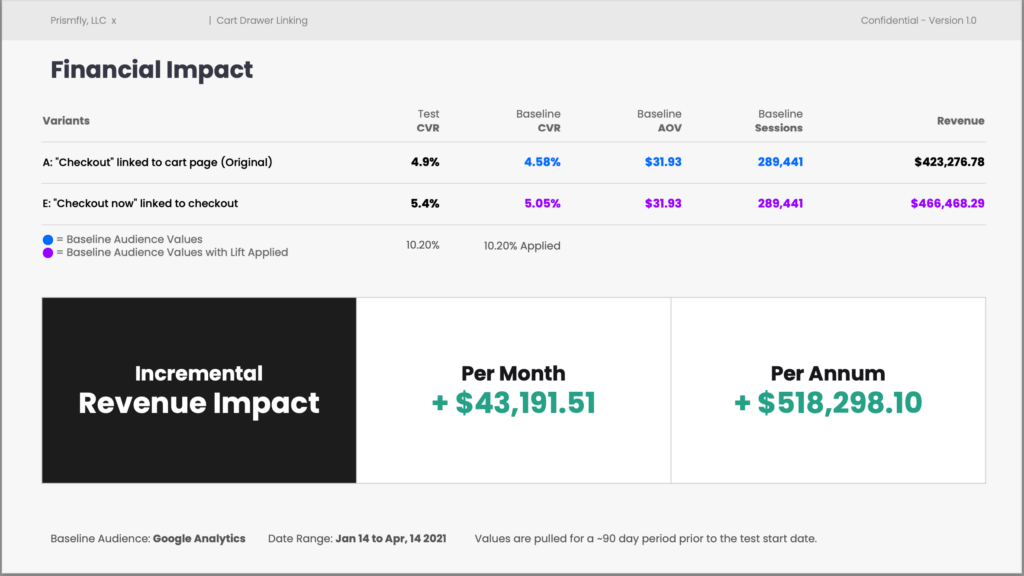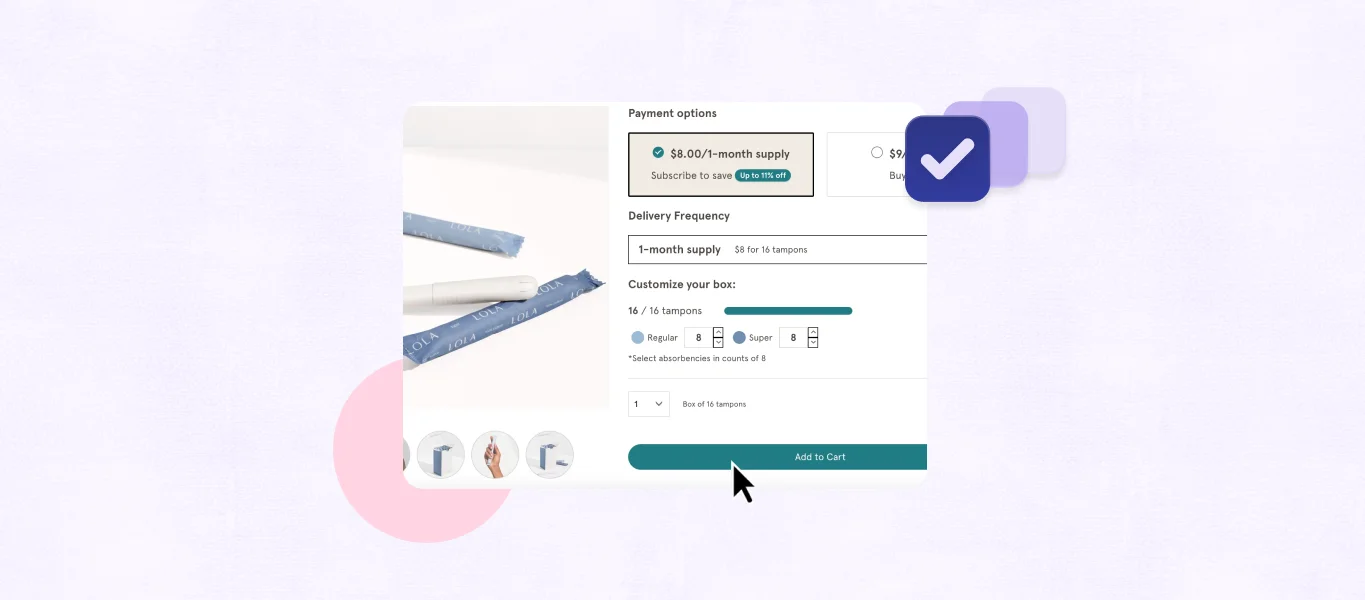Written by Sarah Skolnik, Senior Partnerships Manager at Prismfly.
Experimentation is an essential part of any successful brand’s growth strategy. It allows businesses to test new ideas and optimize their website’s conversion rate. It also involves making changes to your website or marketing strategy and tracking the results to see what works and what doesn’t.
In this blog post, we’ll dive into how and why experimentation can help reduce friction in the buyer journey and increase revenue through higher conversion rates.
1. Documentation is key
Companies are composed of people and their documentation. As your company grows, and you begin to bring on new people, allowing them to quickly scan historical findings is a great way to avoid reinventing the wheel. It provides a record of what has been tested, what worked, and what did not.
This documentation allows for effective analysis and interpretation of the data, which can help to identify patterns, trends, and insights that can inform future experiments. It also enables teams to track progress over time and evaluate the impact of changes made to the website or marketing campaigns.
Without proper documentation, it can be difficult to understand the reasoning behind decisions made and to make informed decisions moving forward. It is also important to note that poor results are just as important as good results.

2. Leverage different types of experiments
Leveraging different types of experiments allows you to systematically test and optimize different elements of your website or app. By conducting experiments, you can gain valuable insights into user behavior and preferences, and make data-driven decisions about how to improve your user experience and ultimately increase conversions.
There are several types of experiments you can conduct, including:
- A/B testing
- Multivariate testing
- Multi-armed bandit testing
A/B testing involves testing two versions of a webpage or app against each other to see which one performs better. Multivariate testing involves testing multiple elements of a webpage or app simultaneously to see which combination performs best. Multi-armed bandit testing involves several options or “arms” to choose from, and each arm has an unknown reward distribution. The goal of the experiment is to determine which arm(s) provide the highest reward while minimizing the number of times a sub-optimal arm is selected.
By leveraging different types of experiments, you can gain a more complete understanding of how users interact with your website or app, and identify the specific changes that will have the biggest impact on your conversion rate. This can help you make more informed decisions about how to allocate your resources and prioritize your optimization efforts, ultimately leading to better user experiences and higher conversion rates.
3. Focus on high-impact, low-effort tests
By prioritizing tests that require fewer resources but have the potential to make a significant impact on conversion rates, businesses can achieve meaningful results quickly and efficiently. This approach can lead to quick wins, increased revenue, and improved user experience, all of which can have a positive impact on the overall success of the business.
In the example below, this test in the native Shopify checkout takes less than 10 minutes to set up. We’ve seen checkout conversion rates increase as high as 10%.

4. Break down the results on key audiences
Even if a test fails to produce the desired results, breaking down the results by key audiences such as mobile, desktop, and new or returning visitors can provide valuable insights. By analyzing the data, businesses can identify patterns and trends among different segments of their audience, which can help them to understand why the test may not have worked for certain groups. This approach can lead to actionable insights for improving the user experience for specific audience segments, which can ultimately lead to increased engagement and conversion rates.
5. Optimize for higher revenue, not necessarily conversion rate alone
A joke we like to make when business owners come to us is, “The best thing for your conversion rate is just to make your product free. Everyone’s gonna buy it right?” Said nobody ever. The point we are trying to get across here is to optimize for higher revenue, not conversion rate. Conversion rate (CTR) is one metric out of a lot of metrics that matter, in addition to average order value (AOV) and customer lifetime value (LTV).
For example, we often work with subscription companies—like protein powder companies or skincare companies—on their product page. If you default to the ‘Subscribe and Save’ option, what you will often see is a dip in first-time purchase conversion rate. In this case, you will actually lose money, meaning the conversion rate will be lower.
But, if you know your retention rate is good for a specific product (let’s say for at least two to four months) and you are able to get an extra 5% of people to opt into a subscription, your overall LTV will be much higher. So, as a result, you are going to make more money in month two and month three. That is going to completely justify the loss of revenue and dip in conversion rate upfront. This is an example where the conversion rate isn’t necessarily the Northstar.
Grow your brand with the right experimentation
With these five tips, you can minimize risk while performing the right kind of experimentation to take your brand to the next level. Stay focused on revenue, not just conversion rate, and start with high-impact, low-effort tests to start experimenting with what’s working best for you and your customers.



